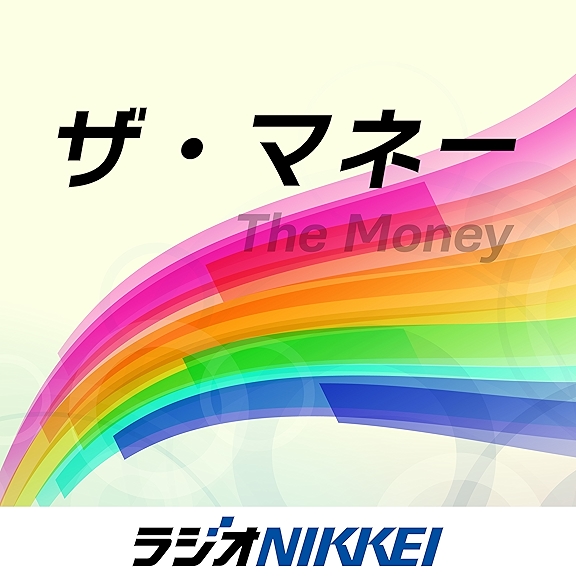
Episode Summary:
On Today Show Chris & Money Mitch get into Aurora or Self Driving Technology.
Guests:
Chris Urmson, Co-founder and Chief Executive Officer of Aurora
Hosts:
Twitter: https://twitter.com/STORYInvestors
Twitter: https://twitter.com/chriskatje
For FASTER NEWS and IN-DEPTH market data, check out Benzinga Pro. For a free two-week trial go to http://pro.benzinga.com/register
- Listen to SPACs Attack Archive here
- Subscribe to all Benzinga Podcasts here
- Sign up for the SPACs Attacks Newsletter here
- Get 20% off Benzinga PRO https://benzinga.grsm.io/youtube20
- Become a BENZINGA AFFILIATE and earn 30% on new subscriptions
Disclaimer: All of the information, material, and/or content contained in this program is for informational purposes only. Investing in stocks, options, and futures is risky and not suitable for all investors. Please consult your own independent financial adviser before making any investment decisions.
Unedited Transcript:
Hey traders, who wants to paint some candles with me? I'm ready to get into the fact game, bro. One thing I'll tell you what color is here, green baby. We're going green in the stack land. Let's go ahead and start. Don't miss your free chance to tune into bending his very own bootcamp series on November 20th.
If you're looking to dive into new concepts and grow your account, this one's for you. How's my little trees doing. Let me bring in the best tree. I have grown my man. Chris hope PTO. What's going on, Bob? Uh, yeah, uh, we, we been gone the last two days. Um, so it's always exciting right? To come back. Cause there's so much to talk about so much news.
We've got an interesting company today for our interview that I really want to hear more about. Um, it's Friday. Which as you guys know, if you've watched the show Fridays are more casual day, right? So we'll hopefully get to some ticker time later on in the show. Um, so setback and, you know, relax. It's uh, it's SPACs attack time.
All right. Now I have been having some mic issues today, so I will ask the chat. Do you guys hear me? Like, okay. I did see someone mentioned, I might have to come back. I've had to restart my computer multiple times today. I don't know what's going on. So you guys hear me with the deep voice? Let me know.
Cause I will have to restart and leave Chris here. Um, but let's go ahead. Let's get started. Let's pull the Bob Ross off our a, I want to keep the, the Afro going here. I like the fro, but the beard has got to go. All right. I'll keep the frog on though. How's that looking? Good. Looking good. What can I say, guys, let's get this party started.
Let's go ahead. Let's get into some headlines, a lot of specs moving out there. I have some of my own that I've been watching and Hey, if you don't believe the specs are back we'll, uh, I mean, you probably haven't been watching these moves lately, so let's go ahead. Let's get into those headlines, Chris, please inform us because all this hair is getting to my head and I just don't know what's going on out there.
So that's why I come to my man to let us know, take us back to the headlines.
All right guys. Yeah, a lot to get to on headlines today. Uh, up first we have M O T N. So this is motion acquisition. So the company is merging with doc go. They reported that they secured new contracts today. No terms were disclosed, but again, this company continues to expand, uh, earlier this week, uh, they reported third quarter revenue of $81 million, which was up 200% year over year.
They also said that they're rolling out a series of major initiatives and joint partnerships. And they see revenue hitting $260 million for fiscal 2021. So if you didn't know, dot go is like an, a used to be called ambulance with a Z. It is a, you know, on demand, uh, medical service company, they operate in 26, us markets and the United Kingdom.
They have license application pending and an additional 14 states have 26 plus 14 would bring them up to 40 states covering, you know, the majority of the U S states. So M O T N definitely one to watch here and then turning to a more earnings. We have better where to Mexico, uh, B w M X company reported third quarter earnings today.
So, uh, revenue was up 4% year over year. They did say that they had several headwinds in the quarter. Um, but that they're progressing, uh, you know, forward and they actually have some exciting. I don't want to talk too much about this company today. Cause actually better where to Mexico we'll be joining power hour today.
Coming up after this show for an interview, if you remember, they were on our show a couple months ago, they will be talking all about that third quarter earnings report. And then also about, you know, some new company initiatives moving forward. Remember that this is one of the better performing specs of the last year prior to today's dip.
They also pay out a dividend. So EWM acts definitely one to watch. Then we have wall box WB X to wall box, which was one of the high flyers. Earlier this week. They announced that they will provide a business update on Thursday, November 4th. I'm going to talk a little bit about the calendar later, some specs to watch next week, but keep that on your radar wall box, an update next week, electric vehicle charging company that has been hot all week.
And then speaking of electric vehicle stocks that have been hot, we have lucid El CID, which will of course, take a look at when we cover our watch list. This is the number one trending stock on StockTwits today. It has started getting mentioned heavily on wall street bats. So the company will have their first deliveries tomorrow of the lucid air, October 30th.
There was also news that Saudi Arabia is considering a manufacturing facility. Shouldn't come as a big surprise since that country's investment fund is a big investor in lucid. And then also they announced that they will report third quarter earnings on Monday, November 15th. So less than two weeks after that first delivery, we will get earnings from lucid.
So I expect to hear lots of updates on how reservations and deliveries are going. So definitely something to why. Yesterday, we had the presentation from Facebook, Facebook connect, talking about augmented reality, virtual reality. And of course, if you did not hear yet, the company changed its name, uh, to, um, Metta, right?
New ticker will be M V R S. Metta is the new company. So yesterday, uh, we saw lots of AR and VR names. Get a jump on the news from Facebook. And one of those companies that got a little bit of a lift yesterday, but it's starting to take off today is Matterport. So Matterport was on our show a couple months ago.
Um, we actually got some exclusive headlines for our Benzing of pro users. Again, if you're not using Benzinga pro you are missing out pro.benzinga.com for a free trial. Those headlines, we had out the smart. The company said, I like to think that by digitizing the built world, Matterport is creating the metaverse.
So there you have the metaverse connection. They also said that their models are optimized for Facebook's Oculus quest using virtual reality mode in the Matterport platform. Um, and then they also highlighted that they announced a collaboration with Facebook earlier this year. So the company saying our collaboration with Facebook is with their AI research in or organization.
Um, so again, Matterport MTTR could be applied here on AR VR and the Facebook name change. I'm seeing shares up 10% today now. Um, so definitely keep this one on, watch the other, uh, related spec to Facebook's news yesterday. Was M P a C um, shares had over $11 and a short lift warrants were up triple digits.
Shares were actually halted. So NPAC is bringing multi metaverse public. Um, this is a small company and I will note that there is not a lot known about multi metaverse. No presentation came out with this spec deal. Um, but this was the only metaverse name that popped up in a search of specs. So keep that in mind.
And we have MP materials. MP. I talked about this earlier this week, right. Company was targeted with a short report and MPS response. They said that they report third quarter earnings after close on November 4th, and look forward to updating all of their shareholders on the state of their business and industry.
So again, I'll hit on next week's events later on, but MP definitely on watch. They have that earnings next week, they're going to have their rebuttal to the short report. Um, and I also want to know, uh, that with that short report, I actually saw on Twitter, several, uh, Twitter users shared the short report with the hashtag ad as in grizzly research, actually paid, um, to promote that short report on Twitter with some, uh, uh, fin Twitter users.
So that's an interesting tactic. Um, so something to keep in mind with MP and then turning it over. Um, C M J, which is merging with Leafly. Uh, they voted this morning to approve the extension. So MC M J shares were also trading higher today on that news. Um, we're up about 4%. This one's gotten a lot of attention this week, uh, going from 10 to close to or over 11, I believe.
Um, you know, to keep this one in mind, uh, we talked about this one at the cannabis conference, right? This is a cannabis play, a thing behind the thing for the cannabis industry. Then MCA D approved their merger with better therapeutics will trade us BTT X today. Uh, T M T S approved their merger with next NAB, new ticker and end today, this would be the, a high redemption, low float one to watch as 17.4 million shares were redeemed 87% of the shares.
Um, so keep an eye on and, and new ticker today, and TDAC was approved their merger with the new ticker LTR. Why next week, this is one I've called out a lot, right? It's a low floater already. And also have to know 20,900 shares were redeemed despite shares trading over $14. So someone missed out on some big profits in this, by not understanding the redemption process of a SPAC.
Then we got a couple of votes for. On, uh, November 8th with P three health partners, uh, DDI max on November 18th with code air and T H M a on November 23rd with pear therapeutics and then turning to our one deal. This one was announced last night, after market closed TWN T uh, satellite company to ran orbital is going public valued at $1.58 billion.
Pipe includes an investment from Lockheed Martin. That's always a key here on the space and satellite place. So Taran is a leader in small satellites. They're a key supplier for the military intelligence community, the community and civil and commercial customers. They said that they're the largest independently owned manufacturer of small satellites in the U S they plan to launch one of the most advanced earth observation, constellation of small steps.
They announced a 300 million, 600,000 square foot manufacturing facility on the space coast of Florida. Um, that announcement came last month. It will make them the largest vertically integrated satellite manufacturing facility in the world capable of producing over 1000 satellites and space vehicles annually.
So they plan to enter the SAS business model and not software as a service, but satellites as a service. So TWN T is the ticker shares up 1% right now to 10 0 1. That was the spec deal announced this morning. That's what I've got for headlines. I know that was a, a lot to get to there again with the last two days off from the show.
Uh, uh, what do you think Mitch? I should be back in a sounding good sounding. Uh, at least, at least it seems like everything's back. I did the restart. We're good. We're ready to go. I'm super excited. I've been seeing a lot of these specs moving. It's not only lucid. A lot of these have been moving and there's, there's a lot they're going towards that 11 and $12.
And when you think about it from underneath 10, that's a pretty good return, right? I mean, 20, 30% on just about any investment, it's not going to be a bad investment. Um, what are you seeing out there? Spencer's joining us. I'm just joined. Just to say that, Mitch, yet you sound a little bit weird, but I'm here for it.
I still sound weird. Good on my end, but really? Yeah, it sounds like Darth Vader. So maybe it's, I don't know. I don't know what's going on with Mitch's mind. I just wanted to come in and tell you that man. It's like he said, like I'm here for it. It doesn't sound. Yeah, but I guess a $300 setup doesn't want to work.
Maybe it just a little bit deeper than normal. I I'm I'm okay with it. I'm here for, I said roll with it. I like it. I mean, it seems like everything doesn't want to work for me right now because I just got signed out of Google is getting hacked or something. Good job. Good show that Chris yeah. Was a lot of, of headlines.
You jammed it in there. Uh, cause you got to get to, are your guests obviously? So, so nice job, man. Thank you. I will, it looks like I'm going to leave Chris here. Uh, Chris, if you want, you can kind of hold it down for a second here. I gotta restart again, trying to fix this audio. I don't know what's going on with my audio here.
Uh, sounded like a little Darth Vader, but Hey, I guess that's the Halloween thing there, but, uh, it goes with the hair they say out there, uh, Bob, the Bob Ross hair today, but yeah, Mitch, I mean, I let's get started on the interview. Um, you know, and then we can have you, you know, join back up. So, uh, it might seem smart there at least, at least I think my audio for my computer will sound good.
Uh, so let's first do this. I wanted to put on a video for us here, so let's, let's do that. I'm gonna share system audio here. Let's check out a little bit about Aurora first so we can learn a little bit more about it. Then we'll take a deeper look and Chris we'll nail down this interview.
Speaking from my own experience, Aurora has the best team of engineers. I've had the pleasure to work with. Many of us have prior experience in self-driving and I've shipped some of the most advanced automotive systems on the road today. We've also architected high performance, consumer electronics and develop cutting edge robotic systems.
All of that experience really shows with how we work and how we develop our technology. We've collectively created a holistic and integrated approach to building the Aurora driver. And that approach has allowed us to build faster and smarter. This ability to build faster and smarter is what will propel us toward meeting our goal of having autonomous trucks on the road.
By the end of 2023, with autonomous passenger vehicles following closely behind by the end of 2020. At Aurora, our hardware is purpose built to meet the complexities of self-driving high precision self-driving software requires carefully crafted hardware to power synchronize and ingest the data from dozens of high bandwidth sensors.
This requires a deep understanding of the software architecture and its dependencies, and a close collaboration between experienced hardware designers and software engineers. We've built a deeply integrated hardware team that produces high-performing custom built products that are designed and tested.
In-house Aurora's hardware includes a custom computer and sensor suite. That's common across all of our vehicle platforms. It's includes trucks, light duty vans, and passenger cars with our hardware and software teams working closely together. We recently released an upgrade to our computer, which is powerful and elegant and has five times more processing power and additional redundancy for added safety.
Using our first principles approach with our deep industry expertise. The team leverages best in industry components that satisfy the Aurora driver needs so that we can focus on those developments and add value to the Rover driver. A great example of this is within our computer with our proprietary time sensitive network switch or TSN for short, the TSN is the backbone of our computer and stitches together.
All the sensors and peripheral devices into one common hub. The TSN uses an advanced networking chip and the unique combination of high bandwidth automotive physical layers that efficiently move data between our sensors, computer and vehicle TSM provides duplicate data packets, redundant pathways, and synchronizes our sensors down to the microsecond roars hardware team is uniquely skilled at product development.
And our business model allows us to be.
All right guys. Yeah. You just saw in that video, a very exciting company. We've got a Rora. So joining us on SPACs Ditech today we have Chris Urmson the CEO and co-founder of Aurora, that company going public via spec merger with reinvent technology partner, Y ticker, R T P Y. Chris welcome to SPACs attack.
How are you doing today? Doing great. How about you doing great. Uh, you know, it's always nice to meet a fellow Chris out there, so this will be a fun interview. Right? Chris interviewing Chris, uh, works for me. Awesome. Well, we've got so much to talk about, you know, this is a very exciting company. I think a lot of our viewers are familiar.
With this company out here, but before we dive into our Aurora, just wondering if you can give viewers a little bit of history about yourself and your experience in the self-driving space, I believe that you once worked for Google. So we'd love to hear more about your history. Yeah, sure. Thanks for asking.
So, um, I've been working in this space since about 2003 back then I was at Carnegie Mellon. I was part of the team, whereas the technic direct for the team that compete in the DARPA, urban and grand challenges. These were these robot races, the defense department put together. So we've the first two years we had a giant Humvees, a race and across the desert, the third year we had a Chevy Tahoe, uh, driving around an air base.
Uh, and so we ended up winning the, the urban challenge, which was the last of those events. Uh, then in 2009, Google asked me to come out and kickoff. What was then a super secret project with the self-driving car program? Um, I helped build that with, with an amazing group of people from, you know, the six of us who started it too.
And when I left, we had 600 something people and, you know, it's now Waymo and off doing whatever way most out they're doing. Um, then in 2016 I ended up leaving, um, spend some time figuring out what to do next and realized there was an opportunity to, uh, to build something special in this space. And that's what we've been doing with a roar for the last almost five years now.
Awesome. Yes. So turning to Aurora, you know, one of the first questions we always like to ask here on specs attack, since we ask all things, you know, specs D SPECT is why the decision to bring Aurora public bias back and was a traditional IPO also considered by your. Yeah, for us, it was a 51 kind of 49 decision to go spec versus IPO.
Um, and you know, for us, uh, we wanted to make sure that the, the, when we entered the public markets, we did that with something that looked like a high quality IPO. And so our first conversations were with the long-term growth investors. So, uh, that would come into the pipe. Uh, and we used that as a process to figure out what's the right market price, right?
And so we engaged with the T Rowe and Bailey and MSM and, uh, you know, the capitals and came to a price that we felt was, was fair for the market. And then we went and looked at, you know, the, the numerous inbound. Specs. We had to talk to us and looked at the list of what was available and, and cut that down to, you know, a handful that we went and went and met with.
And then we ended up going with RTP why? And we did that because we believed that we could align the long-term incentives that, um, you know, the there's, there's some of these facts that are out there where it feels like it's kind of a flip it and get rich quick kind of model. And what we wanted was a, a company.
They understood. This was a long-term build. This was something that's going to create a, you know, if we, if we execute well, it's going to create an immense amount of shareholder value. And so let's set up for that. And so that's what we found with the, the model of going to venture capitalist scale that the re-invent team has.
Perfect. Yeah. I mean, you hit on two key points there that I wanted to dive into. So up for some of the investors, right. That's something we always talk about here on the show. Um, you know, so you mentioned, you know, Baillie Gifford, um, we've got, uh, T Rowe price, the delegatee and then reinvent of course, with mark Pincus and Reed Hoffman.
And then we also have investments from Amazon, Uber, Volvo, and others. Can you just talk a little bit about, you know, what this means in terms of validation for your company to have these big names involved with the longterm. Well, that, that was it. Right. We wanted to help, like we were building a company to be here for the next century.
Right. And, uh, and so we wanted to make sure we had the right capital partners along the journey with us. So as I think about like, you know, who do you, who, who are really good, high quality long-term, uh, tech growth investors and, you know, uh, Baillie Gifford, uh, if you look at their track record, it's awesome.
Right. Um, uh, M SIM, uh, is awesome. Uh, Uh, fidelity, right? These are folks who want, you know, they do the deep work. They're able to commit the capital and hold it there for extended periods of time. And so those are the kind of anchor tenants we want, but then you, you're probably aware at the beginning of this year, we acquired Uber self-driving car business.
And so that's now part of Aurora and Uber could have, you know, could have, uh, partnered, uh, could have continue to invest in. It, could have, uh, sold that business to anyone. And the fact that this is a team that had, you know, a tremendous technical understanding of the problem space as a real long-term business need for this technology.
And they bet on us, right. That that was an incredibly fantastic validation for us. And then similarly, um, if you look at our automotive partners, uh, Toyota, uh, Volvo trucks, And pack our, which is the Peterbilt DAF and Kenworth brands of trucks, right? These are, these are incredible companies, right? That again, could have partnered with anyone could have invested in anyone and they've chose to invest with us.
Think about pack, or this is a company that's been profitable for our 82 years at the management team. There is incredibly capable, incredibly thoughtful, uh, and they're making a bet that that Aurora is, is the company they want to work with in the space. So we're proud of that for sure. Awesome. Yeah. And then the other big point, you know, in the investment side of things, Uh, a key point from the presentation talking about a four year lack of, for some of the investors you mentioned, you know, the long-term plan.
Uh, that's not something we see too often in spec deals, right. We usually see a six month lock up or maybe a 12 month lockup. Talk to us about the four year. Right? Why is that so important for the long-term success of a company like Aurora? Yeah, well, we, we think of it as about aligning incentives. And so the way that the, this deal was structured was for our, our partners at reinvent.
Um, there's both, uh, there's a lock and investing. And so for them, uh, the vesting is, uh, basically is price-based. So if the stock performs well, then they vest into their promote. Uh, and so they get a quarter of it on, I think, on the deal closing. Uh, and this is in the S four. So please, you know, go refer to that document.
Uh, but then, uh, another quarter of it at when we, uh, achieve $50 a share. Another quarter it's 1750 and then another quarter at, uh, $20. Right? And so that means that if the stock performs, they're going to get paid, which they should. Right. If they're doing, you don't have to creating value in the world. And if it doesn't, then they won't.
Uh, and then the, the, um, investment is further locked up. So even if we, you know, we shoot to $20 and stay there, you know, tomorrow, uh, then, you know, they're, they're locked up for four years where it rolls off it at 25% per year. And again, this is trying to signal to the market like, look, this is not a short-term flip it, bet this is a we're going to grow and create value here.
We did the similar thing for, uh, you know, the majority of our significant investors, including existing investors in core Aurora, including myself or other founders. And many of the, the big folks in here, we're, we're gonna, we're locked up for the next four years as well. And we're gonna, uh, you know, uh, that'll roll off, uh, basically 25% per year.
And again, we want to make sure that, you know, there's the, there's a. A number of really high quality specs. And then there's a number that, you know, maybe are less high quality and we wanted to help signal, like, look, we're we're in this to go win and to, to play for the long term. Definitely love that approach here.
Um, so let's dive into the business, right? So Aurora, we've got, you know, self-driving autonomous driving those terms that we hear a lot about. So we have a $9.4 trillion global trucking market. So tell us about Aurora and how you will be addressing the trucking market moving forward. Yeah. So for us, uh, freight is going to be the first market we enter.
Uh, and we look at the U S market where that's about a $700 billion market today. Um, they, uh, The big challenges that market one is a massive driver shortage, and we're all hearing about the logistics challenges we're facing in the U S as a variety of elements that contribute to that. Uh, but, but a big one is we just don't have enough drivers.
Uh, we're 60,000 short today, and we're going to be 160,000 short. By the end of the decade, what we can do with the Aurora driver is we can deliver a safe driving capability that work shoulder to shoulder with the people that are driving trucks, um, can do so, uh, w in a way where it's not limited by the hours of service that a human driver is, so can operate this, you know, this expensive.
Much more, uh, and you can get places quicker because instead of being limited to driving 10 hours, you can drive 20 hours. Uh, and so you can cover twice as much, uh, ground. And then on top of that, uh, because you don't have to kind of trade off between the cost of human time versus fuel. We actually operate the trucks at 65 miles an hour relative, you know, versus 75.
And that changed from 65 to 75 results in about a 25% savings in the amount of fuel you use. And that's great for the environment, of course, and it's good for the bottom line. So that creates a lot of value for our partners. Our model is to deliver the Aurora driver, uh, as a service. So think of it like a software as a service type business.
So we don't want to own trucks. We don't want to go in and compete with our customers. We want to actually go and focus on the thing we can do best, which is delivering the driver and enabling our partners to grow and scale their business. Yeah, perfect. That was one of the things I mentioned in the headlines.
Right. We hear about software as a service a lot. Right. The SAS business model, uh, Aurora will be using a driver as a service model. Can you just expand a little bit on that? What does that mean? You know, in terms of the financial outlook for Aurora using this business model. Yeah. So, so as we think about the model, if you're a customer that is buying trucks, what you'll do is you'll go to.
Uh, you go to Peterbilt and you say, I'd like to buy a 5, 7, 9 with the Aurora driver, uh, in, uh, on it. Uh, you'll buy the truck from, from Peterbilt and then you'll pay a roar, an ongoing, uh, you know, revenue stream and we'll have out of that will effectively cover, um, you know, some of the insurance will cover the, um, off-board data services, the depreciation of the hardware, obviously ongoing development of the driver.
They'll get a driver, a driver, or a driver enabled truck that goes out and builds their business. As we think about this, this model, um, you know, as we kind of get into the. Rough justice. We think that, you know, a truck will drive something like 270,000 miles a year and we'll generate something like 50 cents a mile of revenue in that range.
Uh, and so that means we're going to generate something like a $135,000 per truck is our, our estimate today. Uh, and there's a lot of trucks out there and because we were not owning that asset, we're, we're leaning into our partners who know how to operate those businesses effectively with it turns to really nice, um, high margin revenue, stream business for us.
We, we expect. Perfect. And then, you know, you mentioned a fleet being up first, um, or freight, excuse me, freight being up first. Um, but going forward, you know, there's also talks of, you know, the ride hail market, right? You have the Uber partnership and the investment. Um, what does it look like going forward?
Uh, additional markets for Aurora in terms of self-driving beyond. For sure. So, so we start with freight and then, uh, we anticipate entering the, the ride hailing market, uh, from there. And we're going to be doing that a little bit differently. So instead of trying to build a replacement to Uber or replacement to Lyft, we're going to layer our vehicles in or feather our vehicles into a Vuber network.
And this has a couple of really powerful properties. So first, um, we'll be able to deliver a product that's very similar to the truck driving product one, that'll start just off the freeway. Imagine an airport drives onto the freeway, takes you down the freeway, drops you off at your hotel or drops you off at the business district you're traveling to, and then return to you.
And it turns out that, you know, that looks a lot like, uh, you know, a truck leaving a terminal, getting onto the freeway, getting off the freeway, dropping off. We'll be able to do that because we don't have to serve all of the trips in a market. If you're trying to replace Uber and you want someone to actually use your app, you need to service all of the trips.
Otherwise people are like, oh, this is confusing. It's too complicated. I need to, you know, add, to think about which trip I want, uh, on which app. The other really interesting thing about this is most of the competitors in the space are really focused on the low speed driving capability. And it turns out if you look across whoever markets, a significant chunk of the trips actually require high-speed driving.
And so we'll be kind of coming into that market from, uh, from the high end. And then because of the special relationship we have with Uber, we have access to. Yeah, they're their data about the, kind of the, how people move in a city on a city block by city block kind of time of day, uh, you know, hour by hour kind of model.
And this is really interesting because what it means is as we've got our first product in the market, we can have a near perfect crystal ball that says, if I add this capability ongoing on lock, this many points of the, of, of the available market. And so we can calculate and understand what the ROI will be on each feature in a way that, you know, companies would we kind of kill for.
Uh, and so that allows us to build out that side of the business, uh, really efficiently. And as we add those features to the car, because it's the same software and hardware, that's in the car, that's in the truck. As the car gets better, that'll transfer back to the truck and then the truck will be able to go more places, uh, and kind of get to more granular destinations.
It's going, not just from terminal terminal, but perhaps, uh, Depot to local store over time. Awesome. Uh, you know, you, you hit a little bit on the timeline there for freight. Um, I know there's a slide in the presentation that shows a map of the U S right. And it kind of talks about, you know, which areas will get added first.
Can you just share with us a little bit, you know, the, the timeline for Aurora here, what key events should investors be looking forward to hearing more from Aurora on? Sure. So we're looking to, to we're working to launch our product and freight in late 23. That'll be in Texas is our expectation, uh, ly, Texas, because one it's the largest network or the largest kind of state for freight in the U S uh, second is the weather.
It's good. Um, and, and third, uh, that the regulatory regime there is quite favorable and frankly in 45 of the 50 United States, uh, if we had a truck, we had confidence in the safety of, we could bring it to market today, but the, you know, particularly in Texas, they've been very pro automated vehicle technology.
So we're excited for that. We'll then expect that to expand across the Southern freight network, the Southern freight routes, and then ultimately build up and, uh, into the, into the broader, uh, United States. Perfect. You know, when we talk, self-driving a term that gets thrown out a lot is LIDAR, right? So Aurora has in-house LIDAR technology.
Um, can you talk a little bit about LIDAR and why it's important for Aurora to be doing this in house rather than using a, you know, a competitor. Yeah. So when we, so first we're not really in competition with the LIDAR companies, right. Uh, our, our businesses to, uh, bring self-driving technology to market, uh, do that safely, quickly and broadly.
And so if somebody has a LIDAR that is more capable, that that kind of meets our needs. We're going to be using that in a heartbeat, right? Like we're, we're not a LIDAR company. We're a self-driving technology company that said, um, we just fruit for the application that we're trying to solve. We think we have a very differentiated strategic advantage here.
So our LIDAR, uh, most LIDAR works by sending the super-bright pulse of light out into the world comes back. And you kind of measure when you see something brighter, uh, bright enough that you call that a measurement. The challenge with that is one. You can only get so bright before you start damaging people's eyes.
And so there's a limit to how much power you can put out. Uh, and then the second is there's a lot of other bright stuff out there. So the sun, uh, you know, halogen, headlights, other LIDAR. And so you get some, some noise from that for a roars LIDAR first light. What's neat about it is it uses a different measurement mode is called frequency, modulator, continuous wave.
And the way you can think about this is we send this wave out into the world, the wave comes back and then we interfere the outbound and inbound wave. Uh, and that allows us then. Basically look for the phase difference between the two. And that means that we can estimate the distance from that. What's neat about this is that mixing of the outbound and inbound wave, uh, means that we get a 10 to 20 fold, uh, amplification.
So that means we get more signal with the same amount of power that means we can see further. Uh, and then we, uh, 'cause we can, uh, because we're looking for a very particular wave or a frequency or a way for them, we can basically discard all the stuff that doesn't do that. So the sun isn't oscillating in this particular way.
And so we don't get blinded by that. We don't get blinded by, uh, halogen has lights. And then finally with this measurement technique, we can actually measure the Doppler shift. So this is the way that, you know, if a siren for an ambulance goes by




















